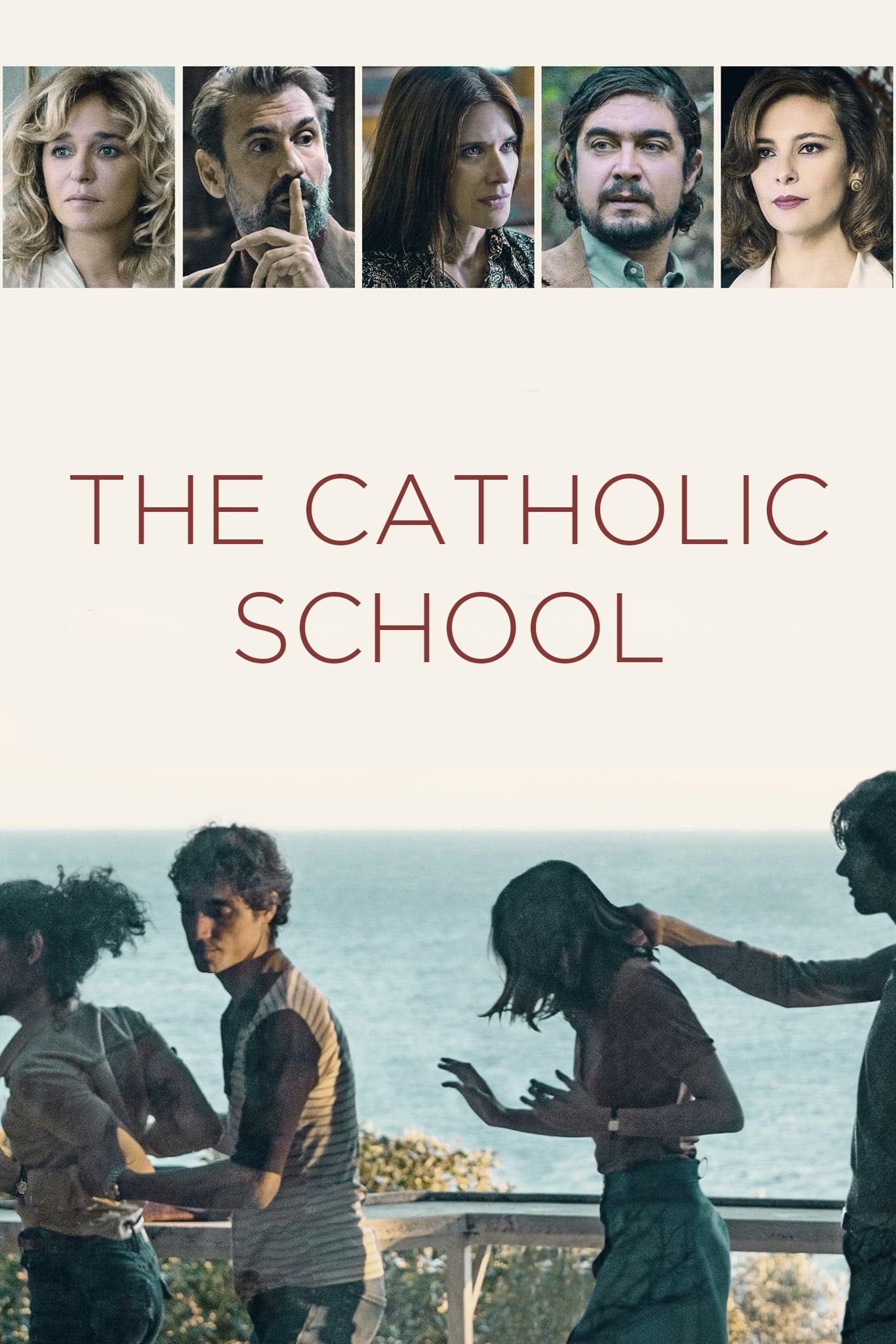“The Catholic School,” a style-polished depiction of the events leading up to the tawdry and terrible real-life episode known to Italians as the Circeo Massacre, is narrated by Edo (Emanuele Maria Di Stefano), who claims that nothing will ever be the same.
It is an oddly light beginning for a movie that will end in a disturbingly prolonged sequence of sexual violence and torture. This scene also highlights the unsettling contradiction Mordini never manages to resolve between the painstakingly recreated, rueful coming-of-age story his film mostly is and the unflinchingly ghoulish true-crime sadism-horror it suddenly becomes.
Edo attends a prestigious Catholic school in the outskirts alongside the kids of half of Rome’s affluent, untouchable elite in 1975. The boys are introduced to us in a rather perplexing mass introduction, but the clumsy screenplay, co-written by Mordini and Massimo Gaudioso, Luca Infascelli, and based on the expansive, multi-perspective book “La Scuola Cattolica” by Edoardo Albinati (the “Edo” of the film), eventually draws out a few personalities from the general impression of undifferentiated, attractive.
Gianni (Francesco Cavallo), for example, is involved in a nasty event early on and is taken before the headmaster, who is swiftly, subtly, paid off by Gianni’s father, Raffaele. Of usual, the most attractive lads are the worst of the bullies (Ricardo Scamarcio). However, at home, Raffaele expresses his anger against his son in a forceful manner—not because of the bullying itself—which he never brings up, but rather because Gianni has made him “look like an asshole.” There were regulations, but Edo reflects in the voiceover that they were only ever sporadically implemented. As a result, the boys learnt to act naturally and accept consequences as they came.
Arbus (Giulio Fochetti), the intelligent one with the cool mother (Valeria Golino), and the attractive sister that Edo has a crush on, are present. Pik (Alessandro Cantalini) is a blond who has the maniacal eyes of a budding school shooter. His mother, Jasmine Trinca, is a former movie star who is also having an affair with Jervi, a motorcycle-riding, leather-jacketed student (Guido Quaglione). Additionally, there is the devout and reserved Gioacchino Rummo (Andrea Lintozzi), who comes from a family of devout Catholics—perhaps with the exception of his sister Lia (Beatrice Spata), who secretly masturbates at night and longs for Jervi throughout the day.
The film’s division into chapters that switch distractingly between countdown formats, from “5 months earlier” to “130 hours earlier” to “2 months earlier,” etc., does not help the impression that “The Catholic School” is attempting to emulate the scope of Albinati’s 1,200-page opus by featuring so many mini-storylines. We’re supposed to do math in the midst of all these characters and incidents, right?
The goal, as Edo’s narration makes clear numerous times, is to place the impending crime within the context of upper-class Italian society in the 1970s, including the mindless machismo, virulent homophobia, blatant misogyny, religious hypocrisy, and the arrogant privilege that allowed such evil to flourish. According to Edo’s account, there was violence everywhere, and being a man was “an incurable ailment.”
However, despite the period being subtly evoked (Grazia Materia’s subtle costuming is a particularly effective signifier) and Luigi Martinucci’s gently antiqued, brooding cinematography at first conjuring up a certain sinister ambience, reminiscent of Donna Tartt’s “The Secret History,” the story of the movie contradicts its more ambitious intentions. The kids we get to know the best are those who were subjected to the same pressures as the murders and, in some cases, even larger tragedies, but who did not end up raping or murdering anybody. However, there is not nearly enough commentary on the role of the church to warrant the title.
Did the three young men commit the crime a result of their societal, family, or religious upbringing, or were they deranged monsters acting solely in accordance with their own warped natures? By alternating between these two points of view, Mordini’s movie makes an effort to have its cake and eat it too. The two victims are also someplace, somewhat hidden by all the young men’s dramatized rites of passage, covert flirtations, and retrospective soul-searching (given heartbreaking dimension despite underdeveloped characterization by Federica Torchetti and Benedetta Porcaroli).
It’s strangely uninteresting in the two people for whom truly, after that summer, nothing would be the same because one of them was dead and the other was stuffed into the trunk of a car alongside her friend’s corpse, just barely alive. “The Catholic School,” tells the story of a historical event that shocked a society, changed Italian rape law, and apparently blighted the lives of all who knew the killers.
“The Catholic School” will be streaming on Netflix on Sept. 14.
Is “The Catholic School” on HBO Max?
“The Catholic School” won’t be released on HBO Max. Best alternatives: 23:59, Texicanas.
Is “The Catholic School” on Hulu?
“The Catholic School” won’t be coming on Hulu. Best shows: Obsessed, Paranormal Cops.
Is “The Catholic School” on Prime Video?
“The Catholic School” will not stream on Prime Video. Best flicks: Adaptation, A Mouse Tale.
Is “The Catholic School” on Netflix?

“The Catholic School” will be streaming on Netflix on Sept. 14.
The cost of a Netflix membership has just increased in the US, with the least costly plan now costing $9.99 and the most expensive one increasing to $19.99.
